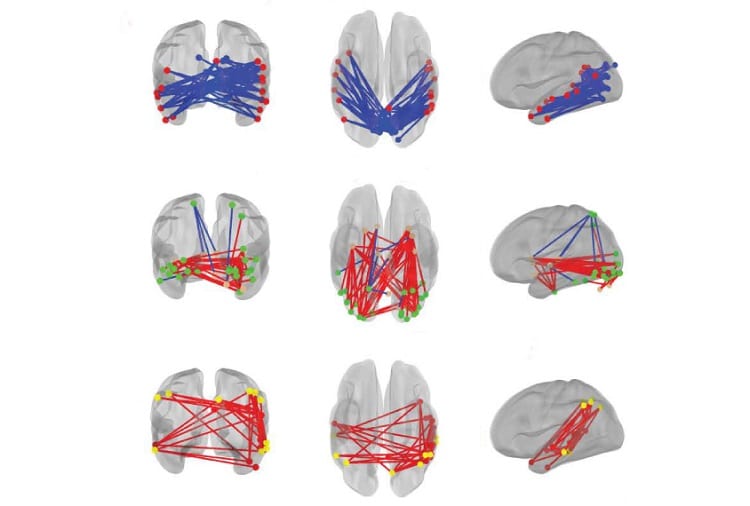From Spectrum News…
Children who have repetitive behaviors, a core autism trait, show particular patterns of brain activity as early as 1 year of age, according to a new study1.
Autistic people have brain activity patterns that differ from those of their typical peers. These differences emerge early in life: A study last year showed that brain activity patterns in 6-month-olds can be used to predict an autism diagnosis at age 2.
But few studies have probed the functional connectivity — synchronous activity between pairs of brain regions — that underlies repetitive behaviors.
“We believe that this is one of the first, if not the first, studies of functional brain connectivity in relationship to restricted and repetitive behaviors in the first years of life,” says lead investigator John Pruett, associate professor of psychiatry at Washington University in St. Louis, Missouri.
The findings may help clinicians spot toddlers likely to benefit from early intervention for autism, Pruett says.
They also shed new light on how brain regions in autistic people interact. For example, the study highlights increased connectivity within the superior temporal sulcus (STS) — a region involved in recognizing facial expressions, body movements and other aspects of social interaction; the STS is thought to be impaired in autism.
Social-communication difficulties are also considered to be a core trait of autism, but they are thought to evolve independently from repetitive behaviors. The new results suggest that both involve the STS, however.
